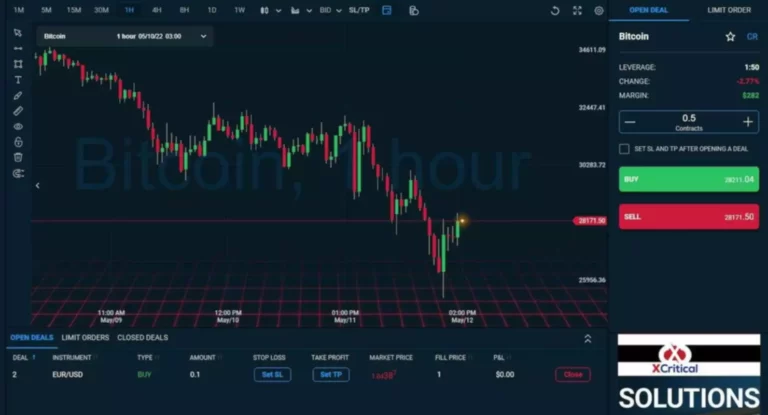Since then, passive investing has remodeled from a controversial idea to a mainstream investment technique embraced by hundreds of thousands of Individuals. Whether Or Not you choose energetic vs passive investing depends on your financial scenario, goals, and willingness to tackle risk. In this text, we’ll explore the variations between lively vs passive investing, the pros Active vs. passive investing which to choose and cons of every method, and how to resolve which strategy aligns greatest along with your funding objectives.
The selection between energetic and passive investing depends on various components, together with your financial objectives, danger tolerance, and funding timeline. Whereas passive investing has gained important recognition because of its cost-effectiveness and constant returns, lively investing maintains its place in the market, particularly for classy buyers in search of outperformance alternatives. Exchange-traded Funds (ETFs) have been gaining growing reputation within the investment community, as evidenced by their high progress each within the number of ETFs created and their net belongings since 2000. As ETFs are in nature much like index mutual funds, on this article we study whether or not this rising demand for ETFs can be explained via their outperformance as compared with index mutual funds. We contemplate the population of all ETFs with inception dates earlier than 2002 and then for every ETF found all the passive index mutual funds that had the same investment style as the chosen ETF and had an inception date earlier than 2002.

You’re Our First PrecedenceEvery Time

They developed a theoretical mannequin showing how the rise of passive investing should affect costs in market equilibrium. They also examined a few of the predictions of the mannequin within the information, by analyzing the effects of capital flows into passive funds—such as index funds and exchange-traded funds—on the stock costs and volatility of large-cap corporations. Their information sample took the S&P 500 and flows into index mutual funds and index ETFs monitoring it. In common, lively investing costs more than passive due to elements such as larger fund management fees, trading charges, and taxable events. Additionally, energetic funds typically have larger funding minimums than passive funds.
Do Active Traders Outperform Passive Investors Over Time?

In The Meantime in Europe, active managers in the eurozone small-cap fairness class had a one-year success rate of 10.2% throughout 2024. By stark contrast, the ten-year success price in the eurozone large-cap equity class stood at a pitiful 5.3%. In some areas, they remain the dominant approach in assets underneath management. Much Less than 22% of them survived and beat their common indexed peer over the last decade through 2024.
Many investment advisors consider the most effective technique is a mix of energetic and passive types, which might help decrease the wild swings in inventory costs during risky durations. Passive vs. active management doesn’t should be an either/or alternative for advisors. Combining the two can further diversify a portfolio and truly help manage overall risk. Purchasers who’ve large cash positions may want to actively look for opportunities to spend money on ETFs simply after the market has pulled again. In Europe, the steadiness between active and passive inflows has been extra risky. Though lively funds noticed impressive inflows in 2017 and 2021, since 2022, inflows into passive funds have been greater.
What Kinds Of Funds Are Utilized In Passive Investing?
The aim is to outperform the inventory market or a particular benchmark index such because the Nifty50 index. Active funds cost management charges which would possibly be deducted annually from the invested property, while passive merchandise tend to have much decrease charges. Actively managed investments cost larger fees to pay for the in depth analysis and evaluation required to beat index returns.
Please learn the full danger warnings and different relevant documents on our website earlier than investing. Some traders engage in active investing to attempt to take benefit of market opportunities. For example, during a market downturn, you may change from mostly stocks to bonds and then attempt to switch back when you suppose circumstances will reverse. That stated, accurately timing the market can be extremely tough, even for experienced investors. In a market downturn, for instance, an energetic fund manager might retreat to lower-risk property, whereas a passive fund would not adapt. Nonetheless, this isn’t at all times a adverse, as it can place you to enjoy https://www.xcritical.in/ a market restoration.
- In a market downturn, for instance, an active fund supervisor might retreat to lower-risk belongings, while a passive fund wouldn’t adapt.
- We also investigate whether country traits similar to economic growth, monetary improvement, familiarity, and investor protection have additional explanatory power.
- The US large-cap market has been notably difficult for active managers as a outcome of its high transparency and effectivity, which leaves little room to add worth over representative indexes.
- Passive investing typically generates fewer taxable occasions because of lower turnover, while active investing could end in extra frequent tax obligations.
- Examples are hypothetical, and we encourage you to hunt personalized advice from certified professionals relating to particular investment issues.
This paper took 5 years of the Council on Foundations-Commonfund examine forex crm of Foundations and utilizing the common asset allocation replaced the lively managers with ETFs. The ETFs comprised the “replacement portfolio.” Over the 5 years the lively portfolio outperformed the replacement portfolio in 4 of the 5 years. The five-year return of the actively managed portfolio was 8.1% versus four.8% for the alternative portfolio.
For instance, you might suppose that a new tech company’s stock will soar in worth, and thus turn into an lively investor by buying a lot of shares to tilt your portfolio in that path. But a passive investor typically believes that the tech firm’s inventory worth already displays the potential for future growth, so you are not essentially gaining an advantage by investing now. Passive investing is shopping for and holding investments with minimal portfolio turnover. Energetic investing is shopping for and promoting investments primarily based on their short-term performance, making an attempt to beat average market returns. Each have a spot in the market, but every method appeals to completely different buyers. A passive investor rarely buys particular person investments, preferring to carry an investment over a protracted interval or buy shares of a mutual or exchange-traded fund.

